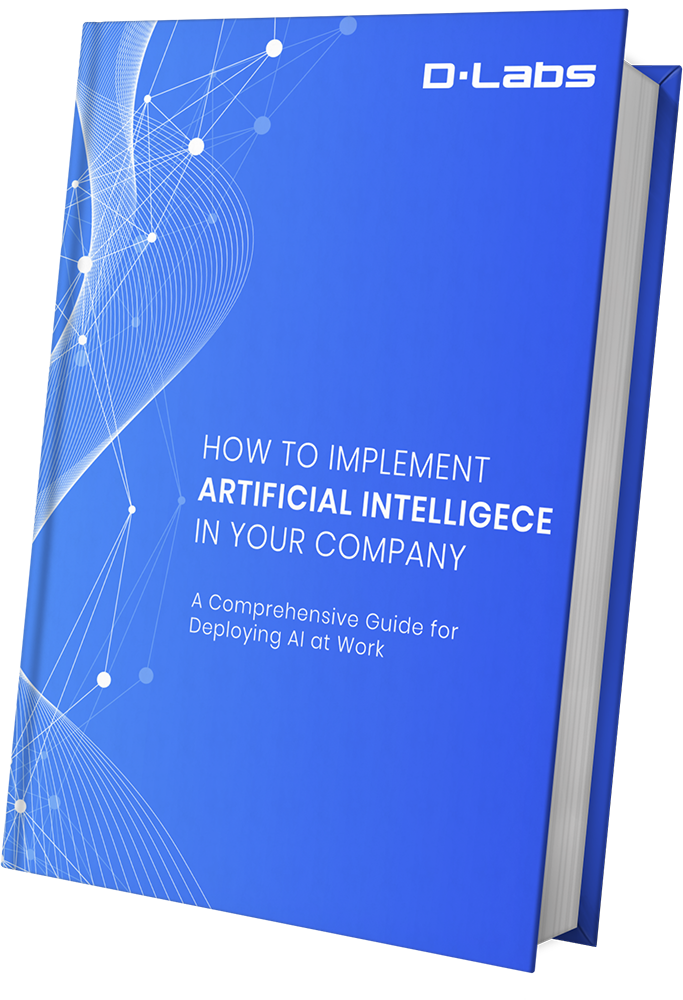The retail industry is changing quickly. Technology is sweeping through the sector, with computer vision applications in retail offering a proven way to enhance the customer experience and boost sales.
That said, the RIS 29th Annual Retail Technology Study: Retail Accelerates shows how just 3% of retailers currently use computer vision, although over 40% plan to implement it within three years.
This post looks at how AI and computer vision will help transform the retail industry, perhaps sooner than most people realize.
What is computer vision?
Computer vision is a field of artificial intelligence (AI) focused on enabling machines to recognize and analyze objects in the real world.
The machine’s ‘eyes’ are some sort of camera. Its ‘brain’ is an algorithm that can process images or video footage. And the moment the camera switches on, the algorithm starts to analyze the environment and respond to what it sees.
An important term when talking about computer vision is pattern recognition: the process of teaching a computer to understand visual data by feeding it millions of rendered images — while combining manual feature engineering with a set of predefined rules.
In essence, engineers can label the images and indicate to the algorithm what to look for. Suppose we want to teach a computer to distinguish between jeans and skirts. We can effectively lay down the rules that allow the computer to track patterns.
The challenge is: this method is slow and inconvenient, so an alternative, arguably more effective approach could be to use deep learning.
Deep learning relies on neural networks, which we can consider as a universal algorithm. A neural network doesn’t need to have a predefined, hardcoded ruleset (or any other logic, for that matter).
It can simply learn from experience, extracting patterns from a set of images — meaning the more varied the images, the better.
These days, computer vision is used in many contexts.
We see AI-powered cameras looking for criminals in public, checking against a database, and alerting the police if a match occurs. We see software acting as the quality checker on production lines, detecting defects and stopping broken products from reaching customers.
But more generally, we see computer vision software helping companies automate routine processes and increase operational efficiency.
Now, let’s look at how you can use computer vision in retail.
How to use computer vision in retail
Retailers can use computer vision in many ways. If you’re looking to drive sales or improve customer satisfaction, here are some ideas.
Improve stock visibility with inspection software
Inventory management in retail is hard because the situation on the store floor is in constant flux. Let’s look at a high-volume clothing store, like Bershka or H&M, as an example.
Items often vanish to a changing room. Pieces are left in the wrong place. And only a handful make it to the checkout. While getting everything back into the right place takes a lot of effort, putting enormous strain on staff.
That’s why stores often end up in a state on weekends, with clothes strewn on the floor as employees struggle to keep up. And to make matters worse, empty or disorganized shelves can drive customers away from a shop.
But there is a solution: automated stock management.
AI in retail can reduce the pressure on the staff by alerting teams about incorrectly placed items or empty shelves, using deep learning models for computer vision to spot when something’s missing or in the wrong place.
The software can even tell staff when a product is out-of-stock — or alert them about damaged items and incorrect price labels. In doing so, it helps them focus on providing better customer service and giving personalized recommendations.
Streamline customer service with self-checkouts
Customers are used to frictionless online experiences. And they now expect the same level of ease in-store too. One way to give it to them is to use self-checkouts.
Self-checkouts — also known as assisted checkouts — are machines customers can use to scan barcodes and pay without a human cashier involved. These stations allow more customers to check out in less time, meaning shorter queues, which we can all agree is great news.
Self-checkouts are also a great way to keep overheads down while still providing fast service. One study showed how an automated airport check-in process costs just 14 cents a passenger, where a staffed desk costs $3. And there’s no reason to think similar savings won’t apply in retail.
That said, self-checkouts have their shortcomings. It’s harder to prevent shoplifting, as customers can put items in baskets without scanning them first. However, you can use computer vision to solve this problem too. You could even use computer vision to eliminate queuing altogether, as Amazon has done with Amazon Go.
In these stores, customers don’t have to scan barcodes. The system simply notes which products they put in their baskets, then bills them automatically when they walk out.
Optimize marketing campaigns using behavioral analytics
Marketers use computer vision to collect data for emotional and customer behavior analytics (for example, cameras tracking eye movements to determine what customers look at the most).
In retail, marketers can use this information to optimize displays, placing seasonal goods (say, Christmas decorations) somewhere customers like to look. Equally, marketers can use computer vision to forecast a product’s potential popularity.
Systems can monitor facial expressions and identify how a customer feels, giving marketers a way to know how people respond to specific goods.
Reduce dressing room queues with virtual mirrors
Virtual mirrors are an emerging technology, but they’re already wildly popular. The device shows the user on-screen as if they’re standing in front of a mirror, then lets them ‘try on clothes’ whether they’re in the store or not.
Some virtual mirrors use computer vision, harnessing face and image detection techniques to transform an image into a graphical avatar— while others use augmented reality (AR) to let customers try on clothes via their smartphone camera.
Brands including H&M, Zara, Ralph Lauren, and Lacoste already use such software, with demand predicted to hit $17.65 billion by 2028.
Boost sales with automated product recommendations
Recommendation systems suggest other items a customer might like, with the software working well online and in mobile apps, as well as in tandem with virtual mirrors.
The ML-powered engine sees what a customer is wearing, then runs the product selection against a database to find items to recommend based on color, shape, size, or another relevant attribute.
One of the most popular engines is FindMine, with retailers trusting it to help customers in parallel with boosting sales. Brands like Perry Ellis, John Varvatos, and Laundry by Shelli Segal even use the engine to suggest ‘best-looks’ for individual shoppers.
And the FindMine CEO claims clients see a 6% sales increase, on average.
How do you want to use computer vision?
Computer vision is a powerful technology. In retail, smart cameras are detecting defective items, helping understand customer emotions, and influencing store layouts.
But that’s not to say these are the only ways you can harness the software in-store and online. There are plenty of ways you can use it to enhance the customer experience alongside boosting sales.
Which leads to a final question: if you could do one thing with computer vision — what would that be? Drop us a line and let us know.
Maybe we can help.






